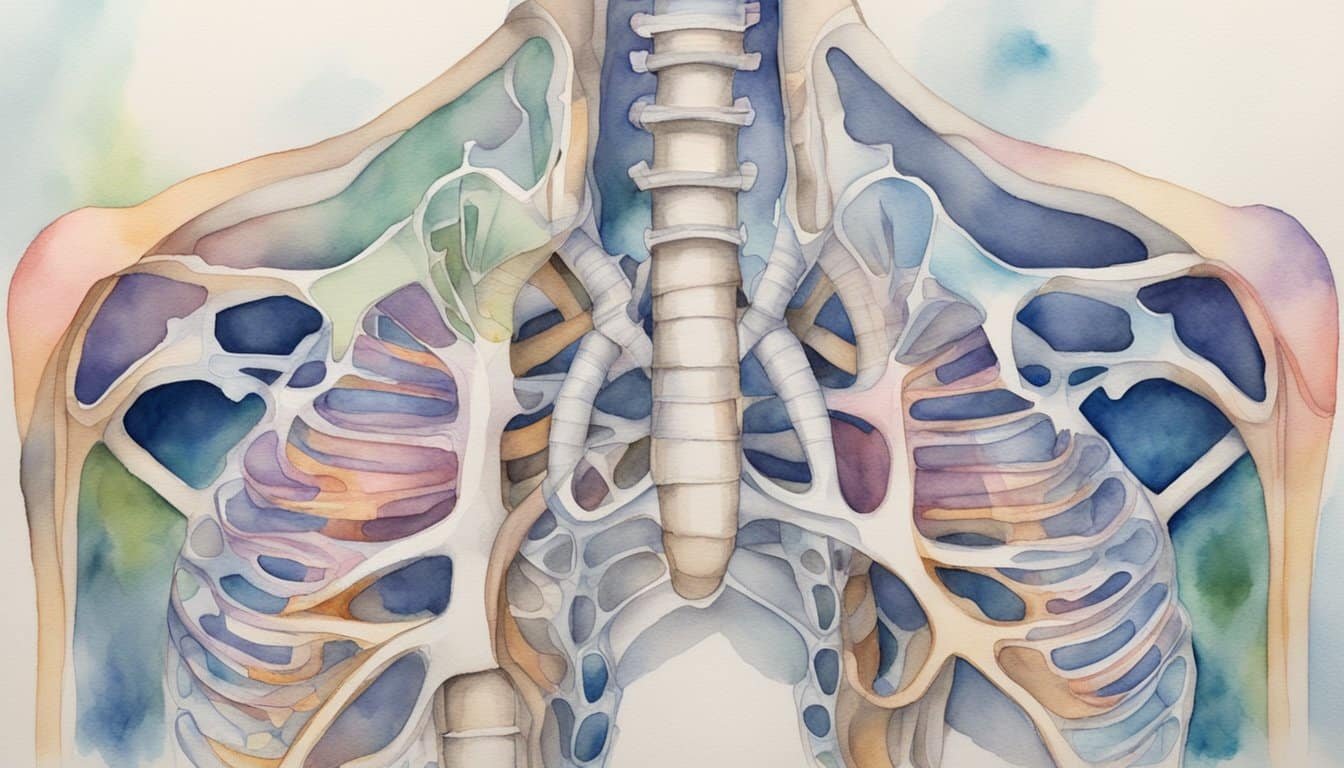Understanding the Basics of Breathing
Breathing is an involuntary process, crucial for life, involving the respiratory system that supplies oxygen to the body and removes carbon dioxide. It’s a complex dance between various components and physical movements.

The Role of Respiratory System Components
The respiratory system is a network designed for gas exchange. At its forefront, the nose acts as the main gateway, warming and filtering the air. As air travels through the respiratory tract, it reaches the lungs, which serve as the primary site for exchanging oxygen and carbon dioxide. Blood vessels surrounding the lungs play a pivotal role in transporting these gases. Oxygen is picked up by red blood cells and carried to the rest of the body, while carbon dioxide, a waste product produced by cells during metabolism, is brought back to the lungs to be exhaled. Properly functioning lungs are essential for maintaining healthy blood pressure levels and overall physiological equilibrium.
The respiratory system also includes other critical parts, such as the diaphragm and the abdominal and intercostal muscles, which support the mechanics of breathing.
Breathing Mechanics: Inhale and Exhale
Understanding the mechanics involves two main phases: inhaling and exhaling. During inhalation, the diaphragm contracts and flattens, creating a vacuum that causes the chest cavity to expand. This expansion pulls air into the lungs. The intercostal muscles between the ribs also assist by raising the rib cage, enlarging the chest cavity further.
Upon exhaling, the diaphragm relaxes and the abdominal muscles contract, pushing the diaphragm back into a dome shape, which, along with the intercostal muscles relaxing, reduces the cavity’s size and forces air out of the lungs. This natural rhythm of respiration ensures that the body maintains a balanced level of oxygen and carbon dioxide.
To understand this process better, imagine the lungs as balloons, the diaphragm as the hand that gently inflates and deflates them, and the process of breathing as the flow of air in and out. Through efficient breathing, the body can maintain necessary functions and sustain life. Proper breathing can also influence relaxation and stress levels as it is closely linked to the nervous system.
Techniques for Better Breathing
Breathing is fundamental to life, yet many people are unaware that improving their breathing can enhance overall health and wellness. Adopting proper breathing techniques can lead to better relaxation, reduced stress, and improved sleep quality. Here are some simple methods to help anyone breathe more efficiently.
Diaphragmatic Breathing, or belly breathing, involves breathing deeply into the lungs by engaging the diaphragm. It helps strengthen this important muscle, which can lead to more efficient breathing. To practice, one should lie or sit comfortably, place a hand on the belly, and feel it rise and fall with each breath.
Practice Mindfulness with each inhalation and exhalation to enhance one’s connection between mind and body. This technique can be particularly useful when feeling anxious or stressed.
Pranayama is a term that comes from yoga and refers to the art of controlling one’s breath. Several types fall under this practice, each with unique benefits. For instance, Alternate Nostril Breathing is said to balance the body and calm the mind.
The 4-7-8 Breathing method is a great tool for relaxation and sleep. This involves inhaling for 4 seconds, holding the breath for 7 seconds, and exhaling for 8 seconds. It has a natural calming effect on the nervous system.
Box Breathing also known as square breathing, is a technique used by athletes and even in military training. Inhale for a count of four, hold the breath for another four, exhale for four, and then hold again for four seconds.
Pursed Lip Breathing is especially useful for lung conditions or during strenuous activities, as it helps keep the airways open longer. To do it, one breathes in through the nose and breathes out slowly through pursed lips.
Improving Posture can also aid better breathing as it allows the lungs more space to expand. Good posture ensures breathing is unrestricted and can be as simple as sitting up straight.
When incorporating breath focus into daily life, conscious breathing becomes more automatic. This can enhance relaxation and decrease stress with just a few dedicated minutes each day.
For more details on these techniques and their benefits, interested readers can delve into resources specifically about The breathing book, Ways to better breathing, and details about the psychophysiological mechanisms of slow breathing.
Managing Respiratory Health and Conditions

Good lung health is essential for a vibrant, active life. One way to maintain this is through proper breathing techniques, which ensure sufficient oxygen exchange and may help manage conditions like asthma and chronic obstructive pulmonary disease (COPD). However, various factors can impact respiratory health including pollution, smoking, and even stress, which can all contribute to health issues like high blood pressure or sleep apnea.
Individuals with respiratory conditions might find relief by adopting breathwork practices. These techniques engage the parasympathetic nervous system, which helps not only with calming emotions but can also slow the heartbeat and improve digestion, leading to better breathing. For instance, focusing on nose breathing rather than mouth breathing enhances filtration and humidity of inhaled air.
When it comes to improving lung capacity, it’s interesting to note that activities like singing are not just enjoyable but also beneficial for lung conditions. Singing can teach one how to control breathing and strengthen respiratory muscles. Additionally, adopting the right sleeping position can influence breathing and help alleviate issues like sleep apnea.
Preventative measures, such as the pneumonia vaccine, are important, especially for the elderly or those with chronic conditions. Moreover, regular check-ups with a doctor are essential for early detection and management of any potential damage due to respiratory diseases.
Adequate air quality is crucial both indoors and outdoors. Reducing exposure to indoor pollutants and allergens can preserve lung health and mitigate symptoms associated with lung diseases. Simple changes in daily habits, from dusting regularly to using air purifiers, can make a significant difference.
So, while managing respiratory health can be a challenge, understanding the importance of breathwork, preventive care, and lifestyle adjustments provides vital tools for those aiming for better breathing and overall well-being.

